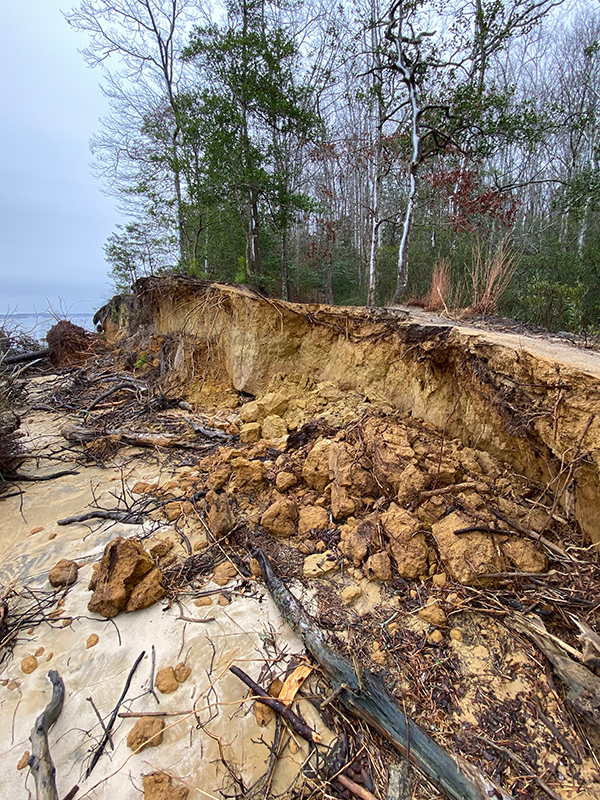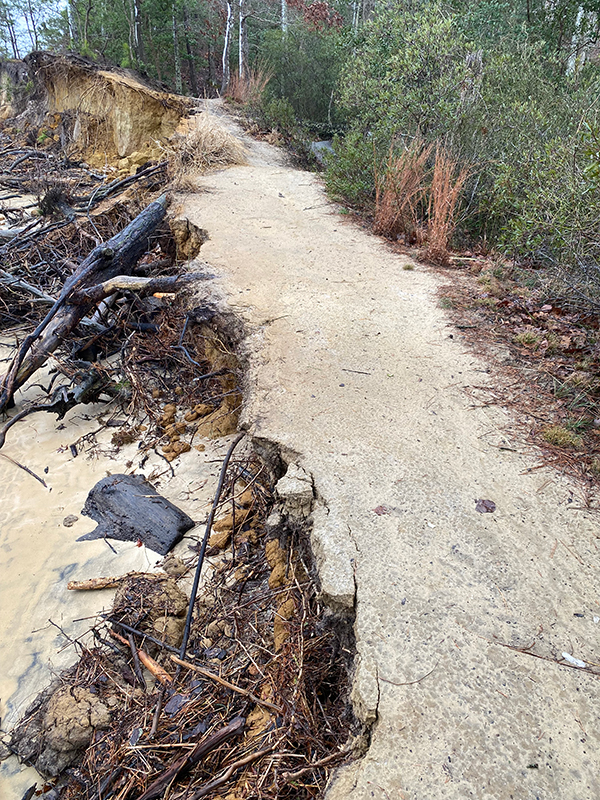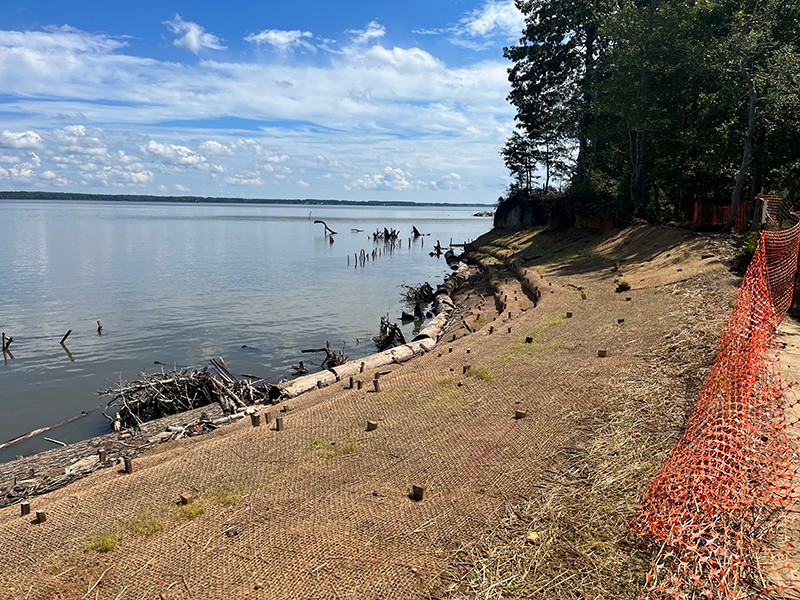

Virginia Department of Conservation and RecreationAn official website of the Commonwealth of Virginia Here's how you knowAn official websiteHere's how you know

Virginia Department of Conservation and RecreationAn official website of the Commonwealth of Virginia Here's how you knowAn official websiteHere's how you know
 Department of Conservation and Recreation
Department of Conservation and Recreation
By Kim WellsPosted September 19, 2022
It all began with a project plan for shoreline restoration at York River State Park and evolved into an additional project component that saved the surrounding wetland area and trail.
The Virginia Department of Conservation and Recreation (DCR) consists of many divisions working together with the common goal to preserve the land and water quality in Virginia and educate the public on the wildlife, natural areas and nature in the parks and other areas of the Commonwealth, as well as to provide access to a safe and fun space outdoors.
Working on projects is common among state agencies, and this positive interaction between DCR and the Virginia Department of Transportation (VDOT) shows that timely, friendly and on-budget projects do exist. This partnership between the agencies also proves that so much more can be achieved when people who are passionate about the same goal work together.
“The project was initiated earlier this year and focused on shoreline restoration at Fossil Beach, but after a storm surge damaged the wetland area and threatened the longevity of the trails, we knew we needed to handle the new erosion problem as soon as possible,” said York River State Park Manager Charlie Whalen. “I spoke with VDOT Project Manager Joe Parfitt and was very lucky that he too was passionate about land conservation. He was quickly on board to help with this additional project request despite it not being in the original project’s scope of work. With additional permits being needed, we had to act fast to get the approval process in motion in order to meet project deadlines while VDOT still had a construction crew onsite.”

Shoreline at York River State Park before stabilization.
While VDOT is mostly known for its highway work, the agency doesn’t just focus on the roadways. One of VDOT’s commitments is to minimize the pollution burden on the Chesapeake Bay Watershed and so saving the land really hit home for all working on this project.
“I truly understand the importance of preserving the park’s trails and surrounding natural area,” said VDOT Project Manager Joe Parfitt. “These delicate land projects need to be done in a timely manner to avoid further damage. We were already working on a project in the park that was slightly ahead of the projected timeline. VDOT had the funds and resources available to complete this additional work to protect the trail, and so it felt like the right decision to make was to help out the park now.”
The team was very lucky not to have to deal with significant delays, such as rain, lack of staff or funding or equipment issues that can slow a job’s progress down. Projects that are completed successfully need to have all the moving parts working together to achieve the desired goals. With new information about the additional Park needs, Joe went to his supervisor and wanted to know how they could help York River with the new erosion at the trail.

Shoreline at York River State Park before stabilization.
“The transition between the original project plan and the modified plan was seamless and permit processes were streamlined,” said VDOT Environmental Program Manager Tracey Harmon. “I truly enjoyed working with a team of people who went above and beyond their job duties to get not one but two important project plans completed. We put these solutions in place that are such a great return investment for everyone involved.”
When combined, both project plans provide a more comprehensive effort to reduce erosion, stabilize the riverbank, protect and increase marsh habitat along the shoreline and accommodate sea level rise while preserving public beach access. These kinds of stabilization projects are typical at parks that have a shoreline, but the real magic of this particular effort is the willingness of everyone to help out with the additional project component to protect the trail and wetlands.

After stabilization of the shoreline.
“It really felt like the right thing to do, especially since this project means a lot to those of us who enjoy the outdoors,” said Parfitt. “Rarely does doing your job feel this good.”
The timeline to complete both project plans stayed on track and allowed for the trails and wetland area to be preserved. Trails will open up at the end of September, and people can continue to enjoy watching the wildlife thrive again at the park.
“It really is a love story between two state agencies because not all projects can have such a positive outcome as this,” said Whalen. “Joe and I sometimes bike together on the trails, and you can see the natural wildlife starting to return to the area. It is always nice to connect with other people who love the outdoors and make some new friends along the way. The park had a major need, VDOT had the funds and resources available, and everyone really wanted to help preserve the trails, marsh area and Fossil Beach. I can’t think of a better win-win-win scenario.”
Categories
Land Conservation | Nature | State Parks
Tags
rivers | state parks

